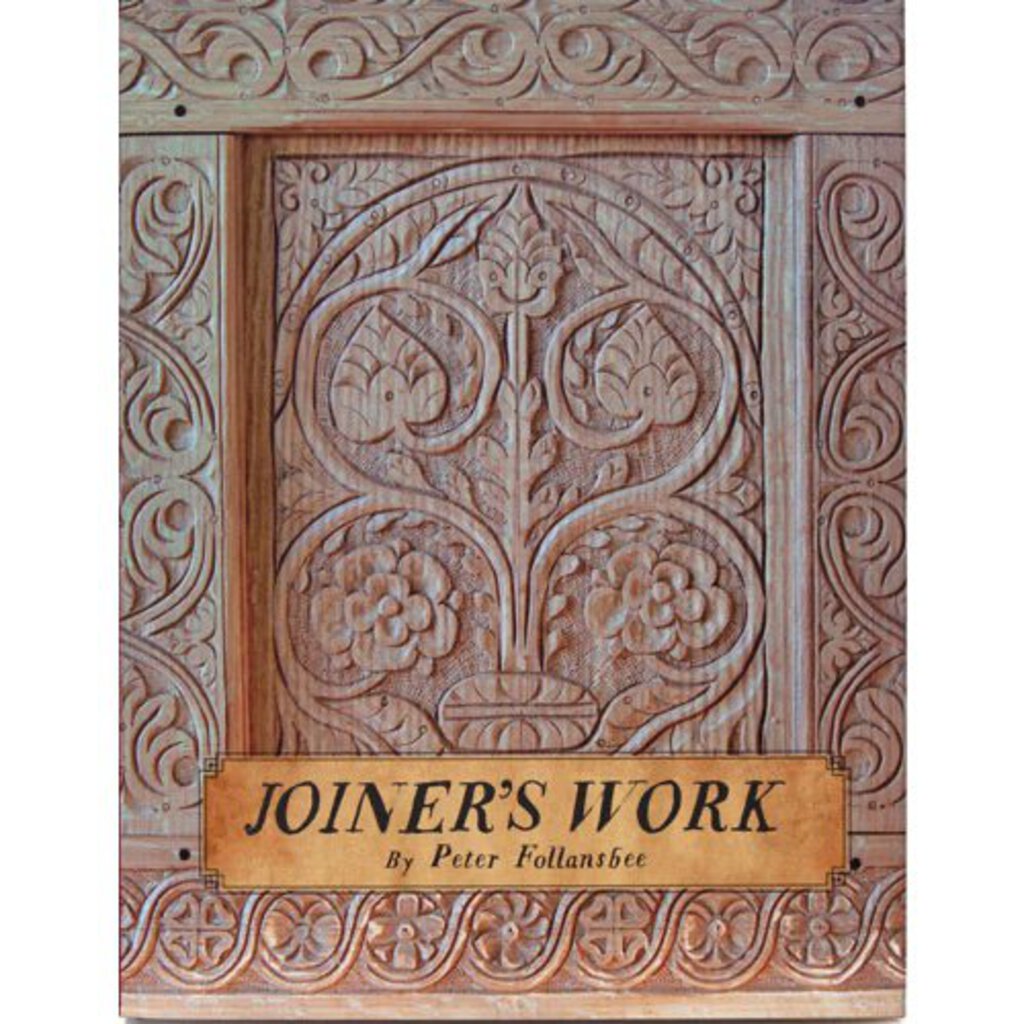North House Folk School
Joiner's Work
Joiner's Work
Couldn't load pickup availability
Forget what you think about 17th-century New England furniture. It’s neither dark nor boring. Instead, it’s a riot of geometric carvings and bright colors – all built upon simple constructions that use rabbets, nails and mortise-and-tenon joints.
Peter Follansbee has spent his adult life researching this beguiling time period to understand the simple tools and straightforward processes used to build the historical pieces featured in this book. Joiner’s Work represents the culmination of decades of serious research and shop experimentation. But it’s no dry treatise. Follansbee’s wit – honed by 20 years of demonstrating at Plimoth Plantation – suffuses every page. It’s a fascinating trip to the early days of joinery on the North American continent that’s filled with lessons for woodworkers of all persuasions.
If you like green woodworking, Joiner’s Work is doctoral thesis on processing furniture-shaped chunks of lumber from the tree using and axe, froe, hatchet and brake. If you are into carving, Peter dives into deep detail on how he festoons his pieces with carvings that appear complex but are remarkably straightforward. And if you love casework, Joiner’s Work is a lesson on the topic that you won’t find in many places. Peter’s approach to the work, which is based on examining original pieces and endless shop experimentation, is a liberating and honest foil to the world of micrometers and precision routing.
The book features six projects, starting with a simple box with a hinged lid. Peter then shows how to add a drawer to the box, then a slanted lid for writing. He then plunges into the world of joined chests and their many variations, including those with a paneled lid and those with drawers below. And he finishes up with a fantastic little bookstand.
Construction of these projects is covered in exquisite detail in both the text and hundreds of step photos. Peter assumes you know almost nothing of 17th-century joinery, and so he walks you through the joints and carving as if it were your first day on the job. Plus he offers ideas for historical finishes.
What Peter doesn’t provide, however, is detailed construction drawings of each piece with a cutting list and list of supplies you might need. As you quickly learn in the opening chapters, the size of the projects (and their components) are based on what you can harvest from the tree.
There’s immense flexibility in this method of work. But to help keep you oriented, Peter provides pencil sketches (made by the wonderful Dave Fisher) that explain the anatomy of each project, plus rough sizes that will help you plan out your work in the woods and at the workbench.
If you are accustomed to CAD renderings, this will feel unfamiliar. But if you are brave, I think you’ll find it a freeing way to build these pieces (which frankly look weird when built using contemporary precision techniques).
Throughout the book you’ll have the voice of Follansbee to guide you. If you’ve ever heard him speak, you will instantly recognize the rhythm of the language and the dry humor. We took great pains to retain Peter’s voice in this book (I think we succeeded).
Joiner’s Work is a massive tome, coming in at 264 pages in an 8-1/2" x 11" format. The text and full-color images are printed on coated #80 paper. The pages are bound to create a permanent book. We sew the signatures then glue and tape the spine with fibrous tape. The pages are then wrapped by heavy hardbound covers that are covered in cotton cloth. The whole package is wrapped in a #100 dust jacket that is coated with a supermatte laminate to resist tearing and long-term wear.
And, of course, all of this is done in the United States.
— Description from Lost Art Press
Share


